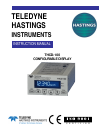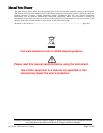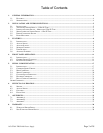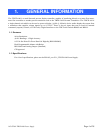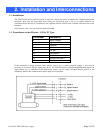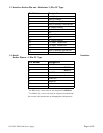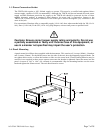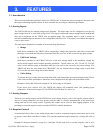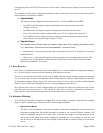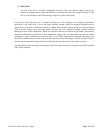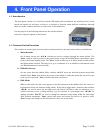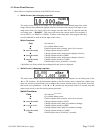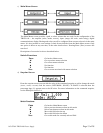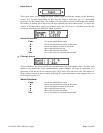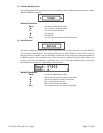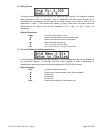165-072011 THCD-100 Power Supply Page 9 of 28
(assuming setpoint is in AUTO mode and not a slave source), then the output voltage of the setpoint would
be 0.5V.
The setpoint does have some configuration parameters that can be used to alter the function of the setpoint
control and they are detailed as follows:
a)
Setpoint Mode
The setpoint can be configured in one of three modes – AUTO, OPEN and CLOSED.
• In AUTO mode the setpoint output is dependant on the setpoint source and value
settings (see below).
• In OPEN mode the setpoint outputs a voltage greater than the full scale of the
device. Given that the setpoint command full scale is 5V, the output in this mode is 7V.
• In CLOSED mode the setpoint outputs a voltage less than the minimum output voltage
of most devices, the setpoint output voltage is –0.25V.
b)
Setpoint Source
The setpoint source dictates where the setpoint value comes from, assuming the mode is set to
AUTO (see above). This can be one of two possibilities – Internal or Slave.
• Internal source – the setpoint uses the value set internally via the ‘
▲’& ‘▼’ switches or via external
communications.
• Slave source – in this case the setpoint uses a percentage of an externally produced value. The
percentage is set via the ‘▲’&‘▼’ switches and the external value comes from the secondary input
channel (as mentioned 5.2 in above)
3.5. User Re-zero
Over time it is possible that the input may ‘drift’ slightly due to various conditions (temperature changes,
etc.). As such it may be necessary for the channel to be re-zeroed by the user.
The user re-zero function is provided for this task. It simply takes the current reading (sampled and averaged
over 3 seconds) and uses that as an additional offset for the channel in question, subtracting the value from
all subsequent readings. Ensure any process value to be zeroed, is in fact truly zero before performing this
function. This would mean isolating flow devices or fully pumping a pressure device.
Note that the user re-zero via serial communications also provides the facility for clearing any user re-zero
value that may have already been set. This should be used before any input calibration is performed to
ensure that the calculated calibration points are not distorted by the user zero offset.
3.6. Adaptive Filtering
The THCD-100 includes an adaptive averaging filter on the display and serial communication readings
output to aid in ‘smoothing out’ unwanted ‘noise’ on the displayed readings.
a)
Operational Band
The filter can be configured to only operate within a certain band, meaning that excursions between
subsequent readings that fall outside that band are shown as real (and not filtered) readings. The
band is configurable between 0.01% and 1.00% of the full scale range of the input channel. It can
also be set to OFF, which means that no filtering is performed (i.e. every reading is a ‘real’ one) and
can also be set to ON which means that filtering is always shown no matter how big of an excursion
occurs.



